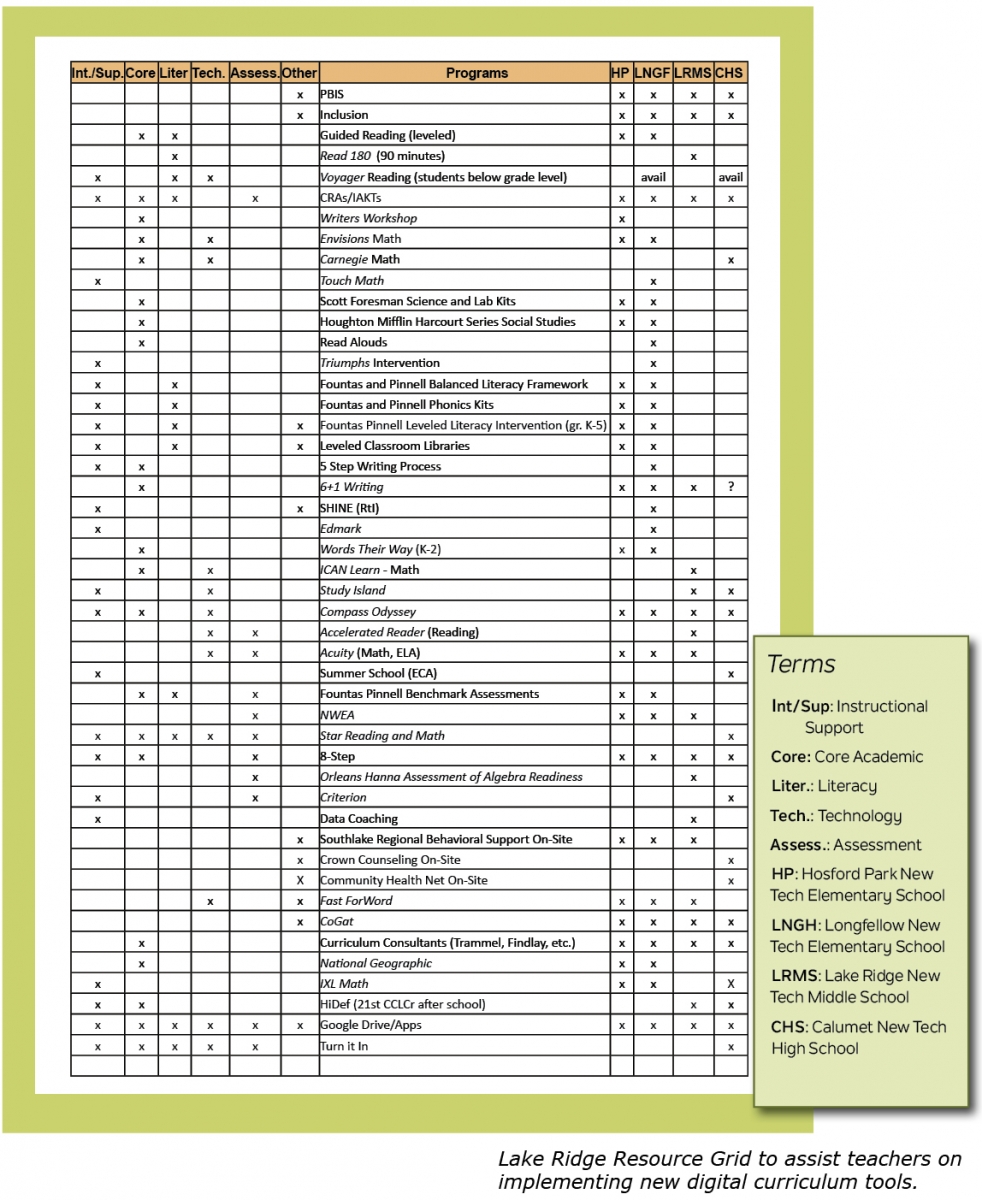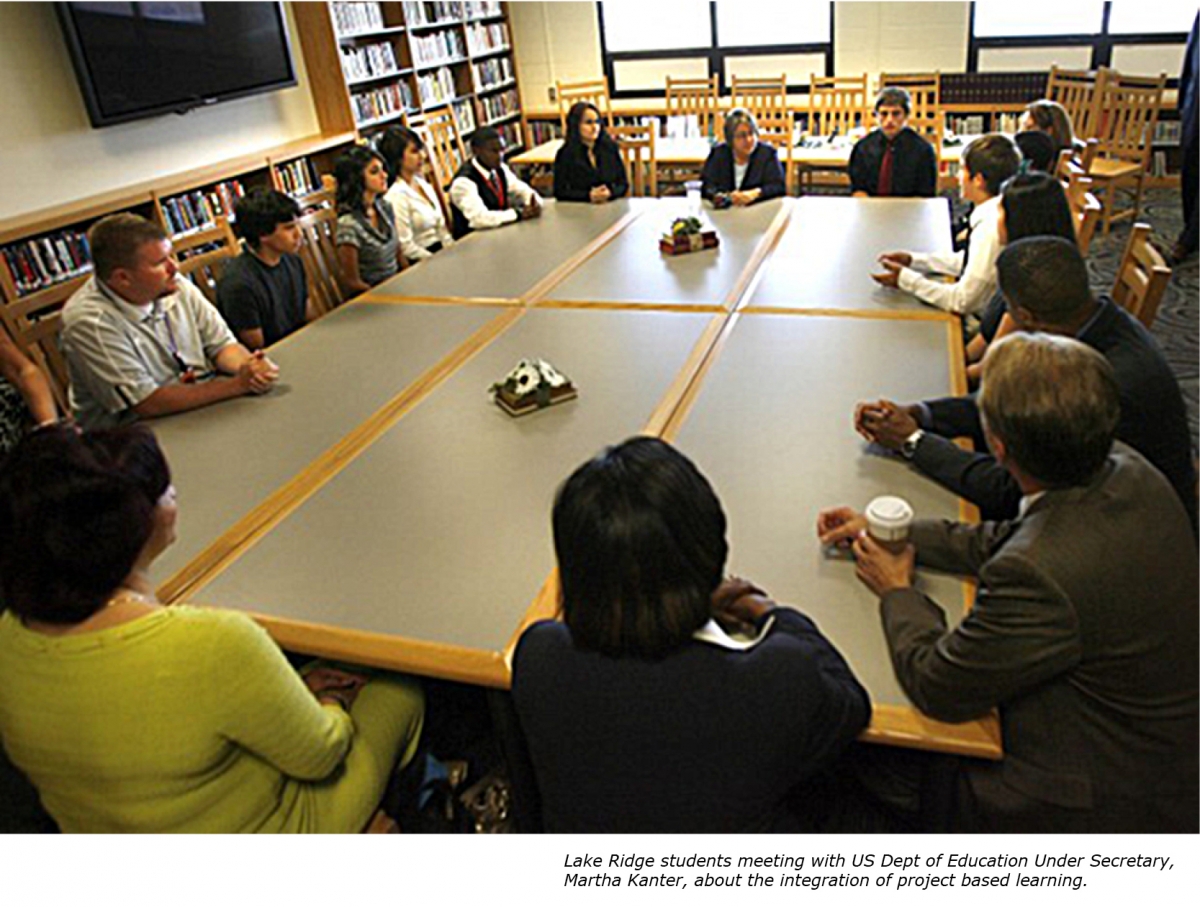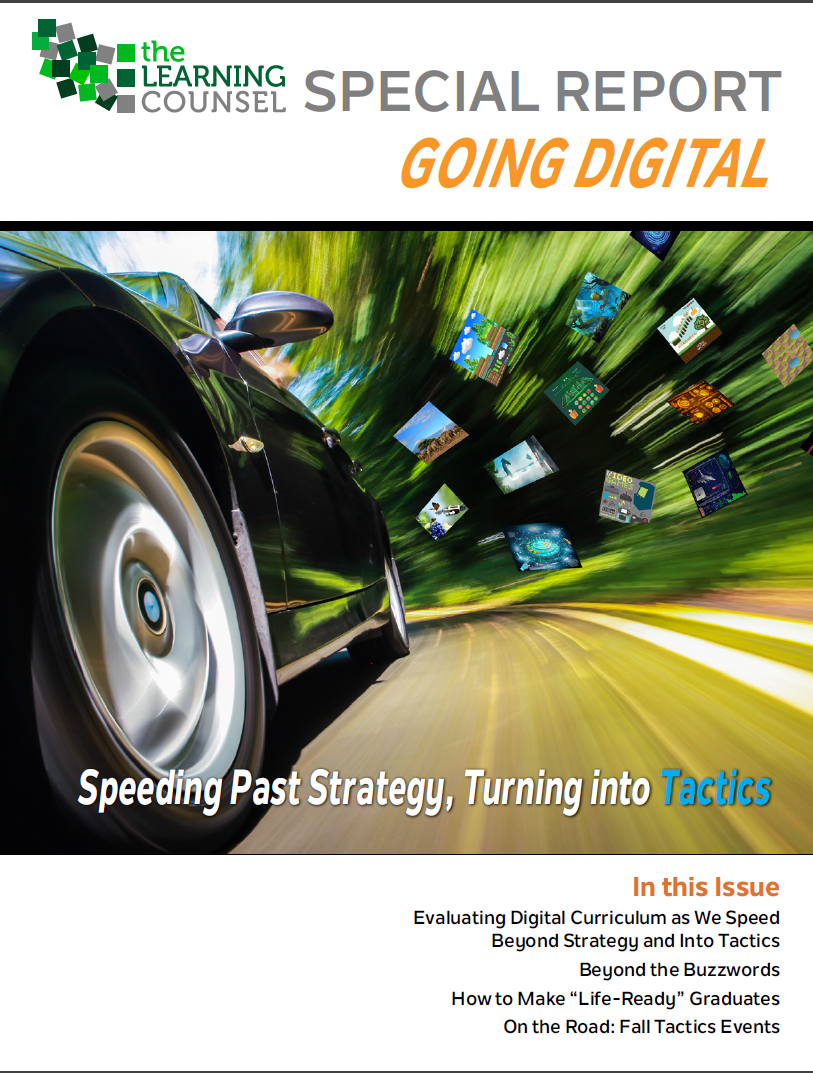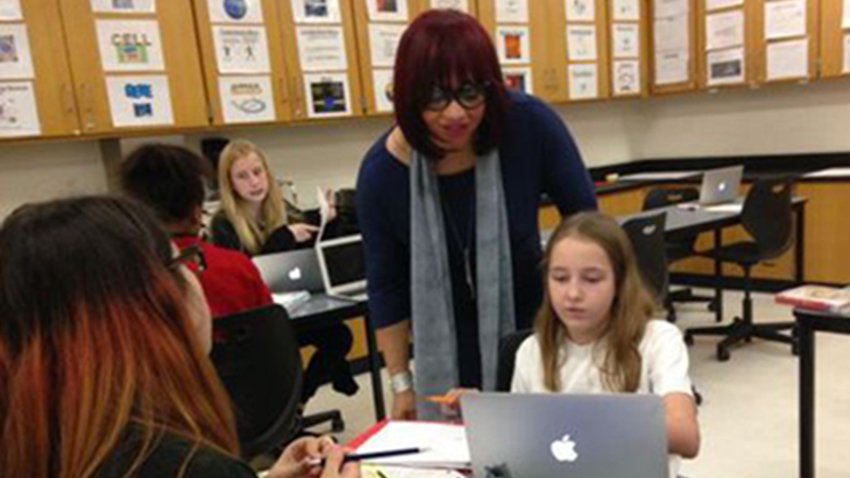In the last twenty-five Learning Counsel Discussion events, we’ve talked with hundreds of administrators who share various stories. In all these, they are concerned about staying informed and learning the best-practices in this constantly innovating landscape.
Workable and result-proven solutions is what Lake Ridge New Tech school in Indiana is all about. Seeing the shift to digital curriculum and technology early on, and noting that their graduates had to be better prepared for a rapidly changing world, they started looking, piloting and re-teaching teachers and administrators over the past ten years.
Lake Ridge is a pre-K through 12 public school in Gary, Indiana. Their own school district, in an urban area, they serve about 2,000 students with two elementary schools, one middle school, a high school, a pre-K Head Start program and an adult education program.
Modernizing a System for Real-World Career Readiness
“We knew we were failing our students. We researched different school models that would address the issues we faced—our kids that knew the three ‘R’s’ but didn’t have the 21st century skills to be college and career ready,” stated Dr. Sharon Johnson Shirley, Superintendent of Lake Ridge. “A lot of what we saw was just ‘How do we help students prep for the test’ type programs. We didn’t need our students to simply ‘test better.’”
Lake Ridge found the New Tech program that had been developed in Napa, California. New Tech was a collaborative effort of Napa businesses (who needed career-ready graduates) and the Napa Valley Unified School District. What was born was a new model that prepared kids, not only with academic skills but modern work-a-day world abilities such as collaboration, work ethic, oral presentation, problem solving and critical thinking.
Lake Ridge is built on that model, with three fundamental pillars:
- Project based learning
- 1-to-1 technology with digital resources that support the teaching and learning
- A culture in which a student can holistically become a contributing member of society.
“When we moved into this model we rapidly converted to a 1-to-1 technology model in a project-based environment. But, to be clear, the tech is simply a tool, not any type of replacement for the teacher,” stated Superintendent Shirley.
Digital Resources – On Tap
The teachers at Lake Ridge confront the same problem as many others around the U.S., spending many extra hours creating lessons from a myriad of possible digital objects and projects. “It is very labor intensive,” stated Cynthia Trevino, High School Principal and New Tech Director. To lessen the burden, the district created a digital r esource guide. It’s a combination of OER, paid courseware and specific subject apps and tools which includes the common publishers, well known across the digital content spectrum—HMH, Brain Pop, Compass Odyssey, Study Island, IXL, and the like.
esource guide. It’s a combination of OER, paid courseware and specific subject apps and tools which includes the common publishers, well known across the digital content spectrum—HMH, Brain Pop, Compass Odyssey, Study Island, IXL, and the like.
The digital curriculum resource grid lays out each tool and on one side is how it can be used best, and the other side of the grid shows which schools are using it so you can spot where teachers have incorporated it already. It is not just a reference for the district to see what supports and tools they have available for the school and instructors. Most importantly, teachers see what resources are being used, and where, district-wide. Certain teachers have become experts using this digital content or that tool. Other teachers can then go to them for rapid help and direction to save time.
As further support to their model, the entire network of 175 New Tech schools around the world built a sort of virtual digital resource warehouse to make all lessons and projects created by their teachers available. “Teachers, of all New Tech schools, share projects and lessons and this is always building up so we don’t have to constantly re-invent the wheel, or at least we have pieces to build from,” stated Trevino.
Lake Ridge is trying to work smarter, not harder. As an example of how they are getting more efficient, Lake Ridge just had district-wide training on Google Apps for Education. Twenty people got level-one certified. “This is part of a program so we are not having teachers up nights with 60-70-hour work weeks,” stated Trevino.
Project Based Learning Awesomeness
Principal Trevino explained the project-based approach is the central philosophy at Lake Ridge. “Real-world projects don’t lend themselves to textbooks. Textbooks are usually outdated and limited and they’re not conducive to combining coursework and helping students understand the ‘why’ of the content.” Lake Ridge rapidly abandoned the use of textbooks altogether. “Our students needed the ability to be continuous learners and to learn information that was timely and relevant.”
To share an example, Trevino explained that they bring in outside organizations with actual situation-based projects, such as an engineering company that was rebuilding a local bridge, the FBI who involved the students in crime scene investigations or Northwestern University who incorporated assistance from Lake Ridge students on a DNA project to potentially exonerate people on death row.
“The DNA project was particularly interesting for our st udents. We combined a biology and health course for that because our instructors knew the students needed to learn about DNA. So instead of traditional lectures and study on DNA and then tests, they organized for the National Innocence Project of Northwestern University to come in and have the students take responsibility for creating materials such as videos, pamphlets, articles or information sheets for people who had been convicted and sentenced to the death penalty. The students had to make materials that would educate the inmates on how DNA could be used to exonerate them.”
udents. We combined a biology and health course for that because our instructors knew the students needed to learn about DNA. So instead of traditional lectures and study on DNA and then tests, they organized for the National Innocence Project of Northwestern University to come in and have the students take responsibility for creating materials such as videos, pamphlets, articles or information sheets for people who had been convicted and sentenced to the death penalty. The students had to make materials that would educate the inmates on how DNA could be used to exonerate them.”
Real-world skills were gained throughout the project. The instructors worked as assistants to help curate resources and coach the students along as they taught themselves about biology, health and DNA as well as law, social issues and the criminal system along the way. “As you can imagine, 5 or 10-year-old textbooks would have been virtually useless in that situation,” stated Trevino.
But the resources weren’t the end of the project. Members of Northwestern University, National Innocence Project came to the school to listen to the students present their findings and resources and then they evaluated and critiqued the students based on a rubric to ensure that the students learned what they needed to know. Trevino pointed out: “It was real world application, using all the tools and tech they are familiar with outside of school. Not one of the students ever asked, ‘why do I need to learn this.”

This story is excerpted from the latest Special Report. Download the complete report here.










